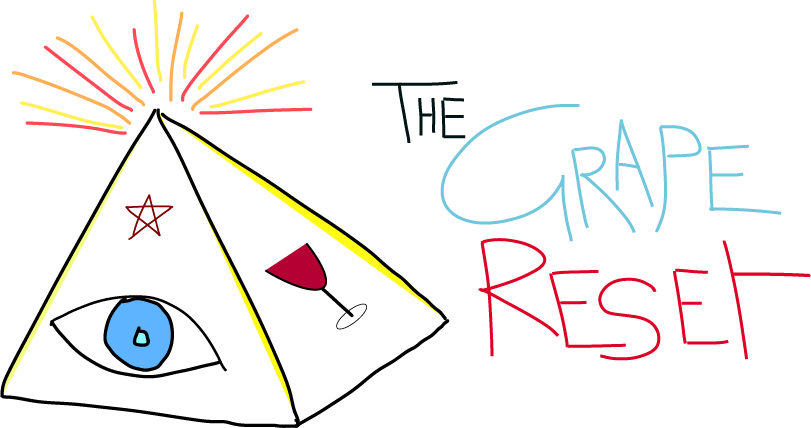Charalaboglou Wines
Overview & Philosophy
Charalaboglou Wines (Domaine Charalaboglou) is an organic estate located at the foothills of Mount Pangaion, in Krinida, Serres, northern Greece.
The winery was founded in 1999 by George & Argyri Charalaboglou.
The estate cultivates approximately 150 acres (≈ 60 hectares) of vineyards under organic farming.
Their philosophy emphasizes sustainability, purity, and site expression, combining traditional Greek varietals with careful organic practices.
Vineyards & Terroir
The vineyards lie on the slopes of Mount Pangaion, in the municipality of Amfipolis, Krinida, Serres.
The soils are varied and include red, iron-rich clay substrata in places, enabling good structure and minerality.
Elevations provide moderate climate influence, with cool nights helping to preserve freshness.
The estate works with old and newer vines: vine ages vary, some blocks are over 20 years old.
The vineyards are dry-farmed (minimal or no irrigation) and cultivated organically.
The estate contains multiple vineyard parcels used for different grape varieties and wine styles.
Grape Varieties & Wine Styles
Charalaboglou works with a mix of Greek indigenous varieties and international grapes, creating expressive wines. Their main varieties include:
Greek / Indigenous: Koniaros (Koiniariko), Malagouzia, Assyrtiko, Moschato, Roditis, Mavroudi
International / Classic: Merlot, Syrah, Cabernet Sauvignon, Cabernet Franc, Chardonnay
Key wine lines:
Charalaboglou Estate: This line comprises two single-varietal red organic wines, one Merlot and one Syrah, each aged in oak for 12 months.
Bstasis (formerly “Vitastianos”):
• Bstasis Dry White — from Sauvignon Blanc and Assyrtiko, organic, PGI Serres
• Bstasis Dry Red — from Koniaros and Syrah + Cabernet Franc, organic
• Bstasis Rosé — semi-sweet blend from Syrah & Cabernet Franc
All Bstasis wines carry PGI Serres designation.Lykopetra line: three organic wines: White (Chardonnay + Malagouzia), Rosé (Syrah + Cabernet Sauvignon), and Red (Cabernet Sauvignon + Merlot).
Other experimental wines:
• Malagouzia in Anthesis — a white wine emphasizing aromatic intensity
• Koiniariko in Anthesis — a late-ripening indigenous red wine
• Pet-Nat / Sparkling / Natural Whites / Roditis, Moscato, etc. — small-batch wines using skin contact, spontaneous fermentation, or partial bottling fermentation.
Winemaking approaches include:
Hand harvesting, destemming, and sometimes crushing with skin contact/maceration before pressing.
Fermentations: both selected yeasts (in some whites) and spontaneous / wild yeasts (in reds, skin-contact wines).
Aging: Red wines and some flagship whites see oak aging (American and French oak), often for 10–12 months.
For whites: after fermentation, wines may rest on fine lees with stirring (bâtonnage) to build texture (e.g. 8 months).
Sparkling / Pet-Nat: some varieties (Moscato d’Alexandri, Roditis) are bottled under crown cap to complete fermentation in bottle, creating natural bubbles.
Wines are bottled with minimal filtration or fining to preserve natural character.
Technical & Operational Details
The estate is visitable, with a tasting house and facilities embedded in the vineyard landscape.
The vineyards are certified organic across all holdings.
Production is estate-only, with grapes coming from their own vineyards.
The wines are released following careful maturation; some wines may carry awards (e.g. the Estate red wines).
The range covers whites, reds, rosés, and natural / experimental wines, reflecting both varietal and terroir diversity.
Strengths & Distinctive Qualities
Strong organic identity — one of the more visible organic estates in northern Greece.
Diverse varietal repertoire — balancing indigenous Greek grapes and international varieties to express vineyard potential.
Terroir focus — soils, aspect, elevation, and microclimate integral to wine character.
Wine line stratification — from entry (Bstasis) to estate and experimental cuvées (Lykopetra, Anthesis) for market breadth.
Innovation in natural wines — engaging in pet-nats, skin contact, minimal intervention styles.
Recognition & awards — some of their wines, especially whites like “Malagouzia in Anthesis,” have drawn praise (e.g. Falstaff score).
Tourism & experience amenity — as a vineyard-based winery, it supports visits, tasting, and direct connection to place.
-
🏠 Address / Contact
Charalaboglou Wines (Κτήμα Χαραλαμπόγλου / Domaine Charalaboglou)
Krinida, Serres, Municipality of Amphipolis, Greece
Postal / T.K. 620 47
Tel: +30 23240 91756
Email: charalaboglou@gmail.com
Website: https://www.charalaboglou.gr/en -
🛒 Retailers / Shops & Distributors with Live Links
Below are some shops / retailers / importers that carry Charalaboglou Wines:
Toxo Imports — Charalaboglou Wines — organic Greek wine importer listing Charalaboglou toxoimports.com
Vinello (UK) — Charalaboglou Wines — wine shop listing Charalaboglou portfolio vinello.co.uk
Spy Wines & Spirits — Charalaboglou Winery — U.K. specialist shop listing Charalaboglou wines Spy Wines & Spirits
Cockburns of Leith — Charalaboglou Wines — Edinburgh wine shop offering “Assyrtiko in Anthesis” from Charalaboglou Cockburns of Leith
Cork & Cask — Charalaboglou “White Field Blend” listing — UK wine shop listing one Charalaboglou blend corkandcask.co.uk
Forest Wines — Charalaboglou “Viditis in Anthesis” — retailer listing one of their white wines

